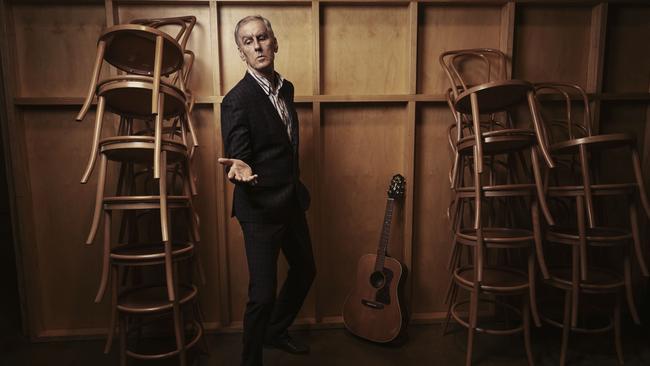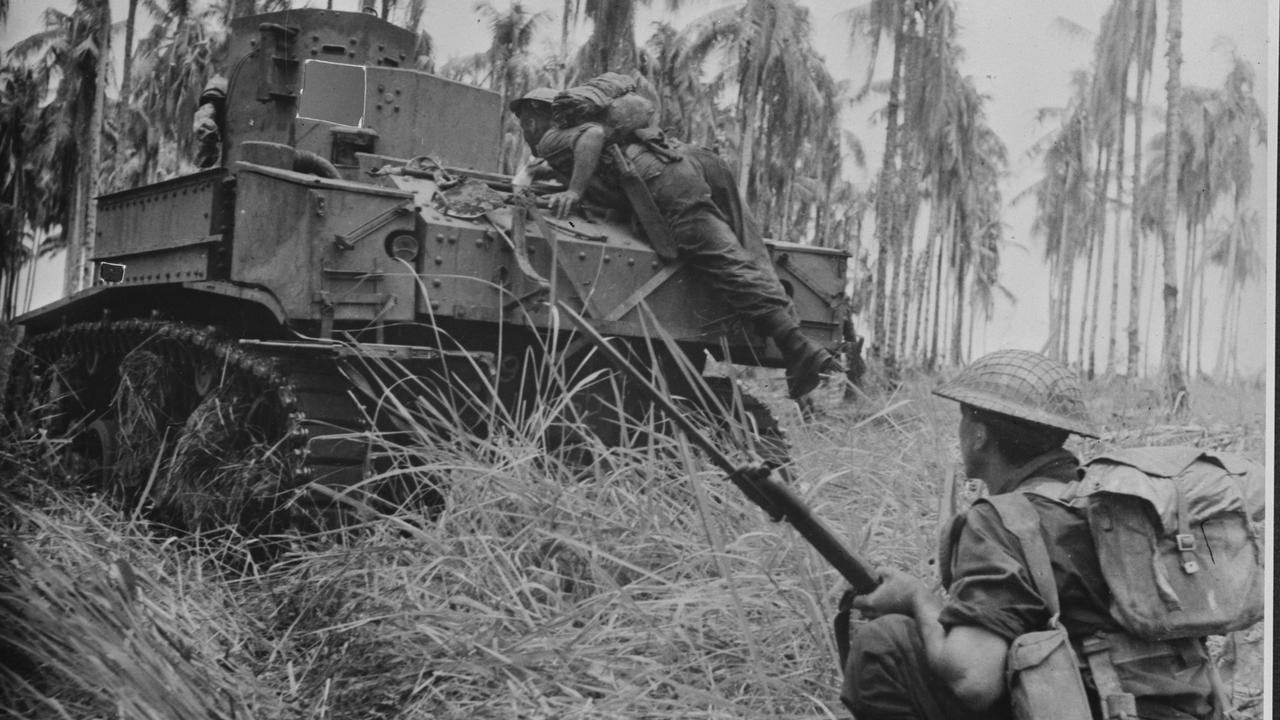The flame still burns
Brisbane singer-songwriter and author Robert Forster continues to make his mark on Australian music.

One of Brisbane’s greatest singer-songwriters strides out on to a sunlit balcony on a warm February afternoon, looking dapper as usual in a dark fitted suit. “Do they have coffee here?” Robert Forster asks, setting his acoustic guitar down in its hard case and removing his dark striped jacket to lay it carefully against a couch cushion. They do have coffee, which the tall man sips between bites of salmon and avocado sushi he plucks with his fingers.
Laid out before his eyes in the near distance is the familiar outline of the city’s skyscrapers, framed by smaller residential buildings and office blocks.
Viewed from this perspective, it’s all right angles and hard surfaces; an unromantic vista of industry and progress that shows little of the artistry and creativity Forster has contributed to the Queensland capital during his 61 years.
Since forming the Go-Betweens here with his best friend, Grant McLennan, in 1977, Forster has come and gone from this city at will, with trips and stints in foreign lands offset by an eventual return to The Gap — the sleepy northwestern Brisbane suburb where he was raised and where he again set down roots with his young family in 2001, in a house 1.5km from his first home.
Up for discussion today are the nine songs of his seventh solo album, Inferno, which he recorded in Berlin last year. Its lead single and title track — complete with bracketed subtitle of Brisbane in Summer — is pure, playful pop, complete with an amusing video that sees the besuited singer wielding a lawnmower.
“Mow the lawn Monday / The grass a disgrace / Mow the lawn Tuesday / The grass in our face!” he hisses, echoing a frustration familiar to most adult landowners in southeast Queensland at this time of year. Trailing in his wake when Forster steps out on to the balcony for coffee, sushi and conversation, however, is not just the nine Go-Betweens albums spanning 24 years — which together form one of the strongest discographies in popular music — and his solo works, but a pair of nonfiction books.
The newest of these, Grant & I, was published by Penguin in 2016. It is that rare example of an accomplished Australian songwriter turning their hand to memoir and being equal to the task. Writing a book is easy enough; all it demands of an author is sitting and typing until they have amassed enough words to fit between the paperback cover. Writing a great book, however, is exceptionally difficult, which is why there are so few of them.
Forster’s memoir inarguably falls into the latter category for it chronicles the story of his life — from his birth in 1957 until McLennan’s untimely death in 2006 — with an irresistible combination of narrative drive, wry observation and genuine insight into what a life devoted to music actually looks and feels like.
It helped that Forster is the kind of writer who has always had an eye on the importance of capturing history, even as he was living it.
On page 49, for instance, he begins detailing the only long car trip he and McLennan took — to check on the manufacturing progress of 500 copies of the band’s first single, Lee Remick, at a Sydney record pressing plant — before suddenly interrupting the scene with an auteur’s keen eye.
“If a film of Grant & I is ever made, it could start here,” he writes. “We are 20 and 21 years old and driving off to rescue our first single. It’s early afternoon and on one side of the road runs the Tweed River, while on the other side sugarcane fields come up to the kerb.”
While Forster eyeballs the highway on that same 2000km round trip, McLennan reads aloud a lengthy Bob Dylan interview from a copy of Playboy magazine that had been banned in Queensland. When the great American songwriter described the ideal sound of his music, as heard on Blonde on Blonde — “that wild mercury sound. It’s metallic and bright gold, with whatever that conjures up” — Forster bangs the steering wheel in his excitement.
“This got me thinking of descriptions for our music,” he writes. “A few weeks later I came up with ‘that striped sunlight sound’. It was a Brisbane thing, to do with sun slanting in through windows on to objects in a room, and the feelings that evoked … We stuck this description on the sleeve of our single as an answer to an imagined interview. The phrase endured, and became a term for a bright, poppy Brisbane sound with winsome or witty lyrics attached, which our first single helped to inspire.” Later, on page 119, he writes: “The act of writing a good song I find to be like taking a photograph — a flare is set off at the moment of composition that permits me to recall my surroundings far better than the normal workings of memory allow.”
He describes his friendship with McLennan as being grounded in a mutual generosity of lending and notes “we created the most romantic thing two heterosexual men can, a pop group”. At McLennan’s funeral, where Forster was a pallbearer, he carried his friend — “a complete one-off” — to a waiting limousine.
“I touched the coffin, knowing Grant was listening inside,” he writes. “The Go-Betweens were being buried too; we both knew that. Never, though, the spirit of collaboration of the two young men who started the band. ‘Goodbye, mate,’ I said. ‘I’ll carry it on.’ ”
His commissioning editor on Grant & I was Ben Ball. “I really felt Robert did a great job of writing about this thing that’s hard to write about — yourself, but also your best mate,” says Ball, Penguin’s former publishing director.
“He’s a fantastically hard worker. The really powerful creative artists don’t swan around, hoping inspiration strikes; they know that you’ve got to put in the actual labour, and he really did. That process of revisiting and refining — that I imagine is a characteristic of great songwriters — he brought to the long form. What a joy it was to deal with him.”
On the balcony in Fortitude Valley, with the bright city skyline reflected in his blue eyes, Forster graciously accepts praise for his memoir.
“I’m proud of it,” he says, smiling. “I spent a good five years writing it because I knew I only had one shot. There was a lot of hard work but I did do it; I did write the book that I wanted to write. It came out, and it was well received. Even now it keeps giving — in late March, there’s going to be an Italian translation, which of course pleases me no end.”
Forster’s first book, The 10 Rules of Rock and Roll, was a collection of his music writing published between 2005 and 2009, with the bulk of it comprising his work for The Monthly magazine. He learned much from a succession of skilled editors at that publication, though he was uncertain whether he could extend himself from writing 2000-word features to the 80,000 words required for a book — a whole other magic trick, as he describes it.
“I owe it all to Christian Ryan,” Forster says, referring to The Monthly’s first editor.
“He plucked me from obscurity: ‘You’ve got the gig. You’re going to be a music journalist.’ He told me this in 2005. I was 47. To be given a new career at 47 is rare in any walk of life.”
■ ■ ■
Inferno contains several songs that predate the publication of Grant & I. One of them, I’m Gonna Tell It, begins: “I’ve got a story, I’ll tell it to someone / Full of the things that have happened to me, love”. Written in 2007, it was omitted from his previous two albums. Why was now the right time for us to hear it?
“It’s linked to the book, strangely enough, because I wrote that song back when I was recording [2008’s] The Evangelist in London,” Forster replies. “I could tell it was a new beginning; the next thing. Grant had died about a year and a half before and I’d just come through the hepatitis C treatment, which hadn’t worked.
“So there was a lot of new information that was going to come out, and that I was going to be questioned about,” he says. “That then fed into the writing of Grant & I — so the song almost foretold the book, in a way. And now the book’s out, the song still has relevance.”
In an interview with online magazine Mess+Noisein 2010, when asked to reflect on his creative life to date, the songwriter offered this summary: “I think I’ve still got a ways to go. I think I’m someone in my early 50s who is basically on fire, who has got something to say, and can say it.”
Reminded of this quote, Forster is amused.
“Being nine years older, I probably wouldn’t use words like ‘fire’ any more — it’s come around to more ‘I’m still alive’,” he says.
“I recognise that person and I’m still like that, but I’m probably a little bit more confident and I don’t have to talk such a big game.
“That’s me before I’d written Grant & I, and that’s probably me talking myself up to being able to write it.
“I’m 61 now and I’m still really happy with what I’m doing now. I’m really happy with Inferno. Since finishing that album, I’ve written two songs I really like, and I’m working on other writing. My day-to-day is not imprisoned by my past. I’m really happy to be involved with working on the box sets [G Stands for Go-Betweens — Volume 1, released in 2015], and looking back with Grant & I, because I can come back to now — which feels like a good way to be.”
After this discussion will come a photo shoot in which Forster will gleefully work the camera with the aplomb of a seasoned pro, followed by a trip across town, guitar in hand, to play songs on live radio. Before he strides off, though, Review can’t help but ask him for his impressions of the most recent tour by David Byrne, who visited Australia late last year.
Rather than offering the usual format of musicians standing and delivering songs while rooted to the spot, the American Utopia concerts featured a dozen performers with wireless instruments and microphones, all of them in constant, tightly choreographed motion for nearly two hours.
At the mention of Byrne’s name Forster perks up like a meerkat. As it happens, he caught the tour in Berlin just after he had finished recording Inferno.
“It stunned me,” he says. “A reinvention of the rock show. Very inventive; very him.”
This marked the fourth time he had seen the singer-songwriter perform: twice with Talking Heads — in Brisbane in 1979 and London in 1982 — and then twice under his own name.
Only once have they met. Immediately after Byrne’s 2009 show at the Brisbane Convention Centre, Forster accepted a backstage invitation to meet an artist he has always looked up to.
They spoke for about 15 minutes, and it was there that Byrne said six words to Forster while talking about The Evangelist: “I really like what you do.”
“That was one of the most amazing sentences anyone’s ever said to me,” Forster says, eyes widening as that flare of a memory is relit.
“That was the only time I’ve ever had any contact with an older artist that said anything like that to me. I was just flabbergasted.”
In that moment a decade ago, an astute outsider might have observed a mutual respect passing between two lifelong pop musicians from different parts of the world — both north of 50, and both still on fire.
Inferno is released on March 1 via EMI Music. Robert Forster will tour in July.



